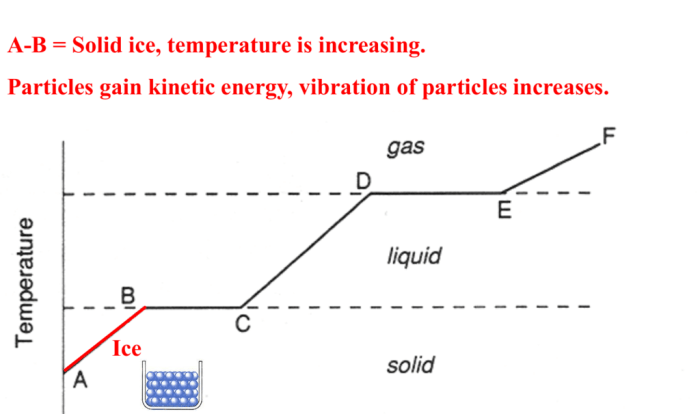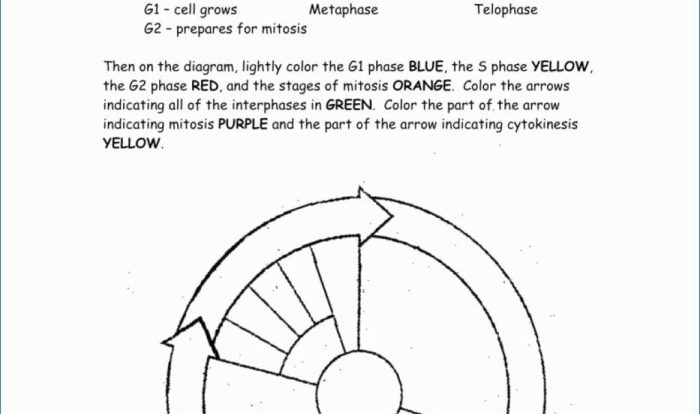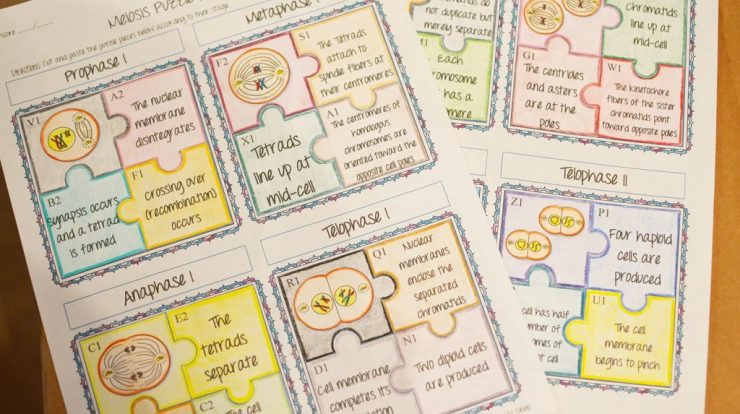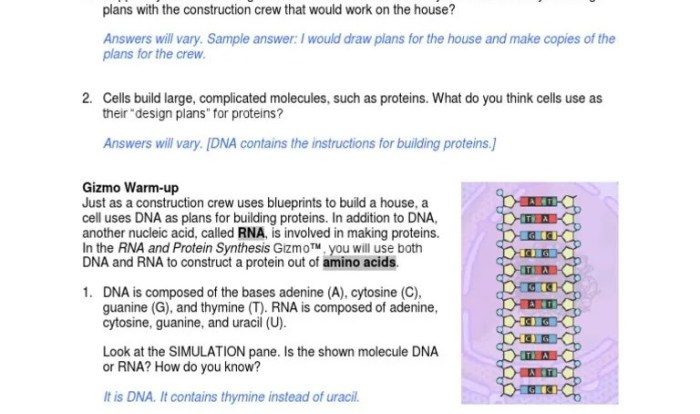Embark on a captivating journey into the intricate world of food chains with Food Chain Gizmo Answer Key Activity B. This comprehensive guide unravels the fundamental concepts of trophic levels, energy flow, and the delicate balance of ecosystems.
Through engaging simulations and data analysis, you’ll gain a deeper understanding of the interconnections between organisms and their environment. Discover how human activities can disrupt food chains and explore strategies for maintaining ecological stability.
1. Introduction
The Food Chain Gizmo is an interactive simulation that allows users to explore the relationships between organisms in a food chain. Activity B focuses on analyzing food chains and identifying the trophic levels of different organisms.
2. Activity B
Analyzing Food Chains
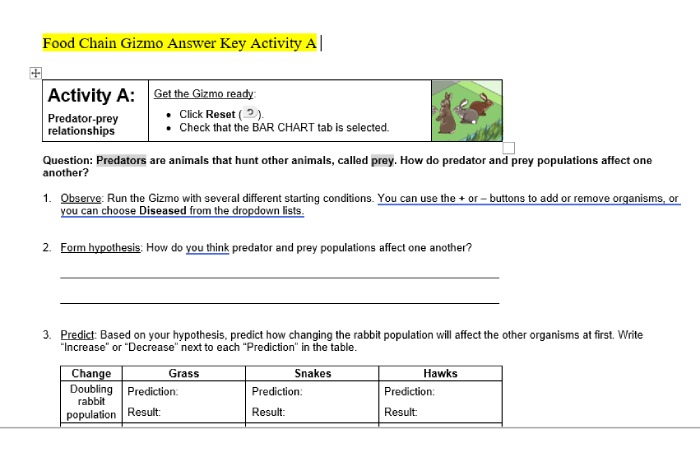
A food chain is a linear sequence of organisms through which nutrients and energy pass, starting with a producer organism and ending with a top predator. Each organism in a food chain occupies a specific trophic level, which represents its position in the chain.
The different types of organisms in a food chain include:
- Producers: Organisms that can make their own food from inorganic matter, such as plants and algae.
- Primary consumers: Organisms that eat producers, such as herbivores.
- Secondary consumers: Organisms that eat primary consumers, such as carnivores.
- Tertiary consumers: Organisms that eat secondary consumers, such as top predators.
3. Data Collection and Analysis
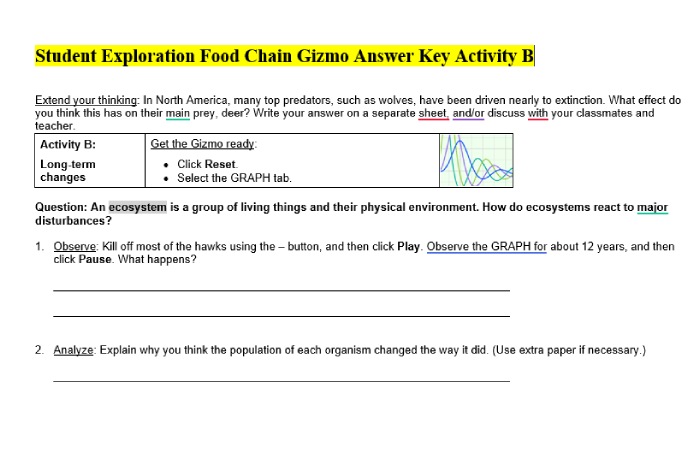
To collect data from the Food Chain Gizmo, users can:
- Select a food chain from the drop-down menu.
- Click on the “Play” button to start the simulation.
- Observe the organisms in the food chain and record their populations over time.
Users can analyze the data to identify patterns and relationships, such as:
- The population size of each organism over time.
- The trophic level of each organism.
- The flow of energy through the food chain.
Users can also create food chain diagrams based on the data they collect.
4. Discussion and Conclusion: Food Chain Gizmo Answer Key Activity B
Food chains are important in ecosystems because they provide a way for nutrients and energy to flow from one organism to another. They also help to maintain the balance of nature by keeping populations of organisms in check. Human activities can impact food chains by introducing new organisms, removing organisms, or altering the environment.
5. Activity Extension
For further exploration of food chains, users can:
- Create their own food chain diagrams.
- Research different types of food chains.
- Investigate the impact of human activities on food chains.
Q&A
What is the purpose of Food Chain Gizmo Activity B?
Food Chain Gizmo Activity B aims to provide an interactive simulation that allows users to explore the dynamics of food chains, analyze trophic levels, and investigate the impact of human activities on ecosystems.
How can I use the Food Chain Gizmo Answer Key?
The Food Chain Gizmo Answer Key provides detailed solutions to the activity’s questions and exercises. It offers guidance on data collection, analysis, and the creation of food chain diagrams.
What are the benefits of using Food Chain Gizmo?
Food Chain Gizmo offers a hands-on approach to learning about food chains, fostering a deeper understanding of ecological concepts. It promotes critical thinking, data analysis skills, and an appreciation for the interconnectedness of living organisms.
